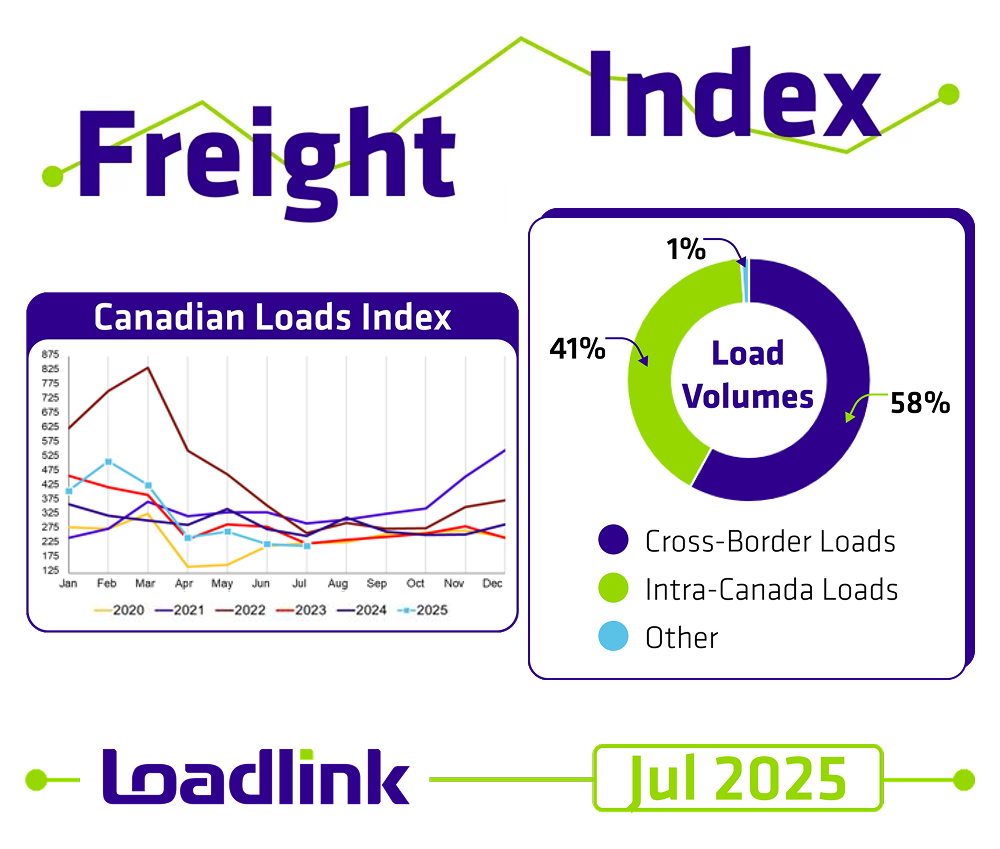

Carriers heading south saw a surprising surge in July, as cross-border activity stood out against an otherwise softer freight landscape. Loadlink’s latest data reveals a 3% month-over-month dip in load volumes and a 14% decline compared to July 2024. While softer overall, July showed signs of resilience in outbound freight, supported by stronger intra-Canada demand and a sharp increase in freight headed to the U.S.
These changes are allowing both carriers and brokers to adjust their strategies — particularly on outbound lanes, where competition remains lighter and movement is trending upward.
Cross-Border Highlights
Cross-border freight remained the largest portion of activity on Loadlink, representing 58% of all postings from Canadian-based users.
● Outbound loads from Canada to the U.S. surged by 61% month-over-month — a significant lift that helped offset a softer overall market. Compared to July 2024, outbound volumes increased by 2%, offering one of the few bright spots in year-over-year trends.
● Inbound loads from the U.S. into Canada dropped sharply — down 36% from June and 31% from the same time last year. This shift was paired with a 22% increase in inbound equipment month-over-month, suggesting that more trucks are available but fewer loads are entering the country.
● Equipment availability for outbound cross-border movement held steady from June, but was down 29% compared to last year — a sign that capacity is tightening, which may give outbound carriers a pricing advantage in the coming weeks.
Intra-Canada Freight
Domestic freight accounted for 41% of all postings in July, and volumes saw a 10% bump from June. While still 5% lower than July 2024, this month’s increase signals continued demand for shorter-haul or regional freight.
Equipment postings within Canada followed the same path — up 10% month-over-month, but down 12% year-over-year. This moderate growth, paired with tightening equipment levels, may open new windows for carriers running domestic lanes to secure steady freight with less competition.
Equipment Trends
The mix of equipment types remained stable in July:
● Dry Vans: 55%
● Reefers: 24%
● Flatbeds: 17%
● Other: 4%
Dry vans and reefers continue to drive the majority of load activity, offering consistent demand across both domestic and cross-border markets.
Truck-to-Load Ratio
July’s truck-to-load ratio reached 3.83, meaning nearly four trucks were available for every posted load — a 14% rise from June’s ratio of 3.35. Compared to July 2024’s 4.06, however, this year’s figure marks a 6% improvement in balance.
The higher monthly ratio signals greater competition for carriers, but also provides brokers with more available trucks to cover freight — especially on inbound lanes where capacity continues to rise.
Market Outlook: Opportunity in the Outbound Shift
While overall volumes pulled back slightly in July, outbound freight to the U.S. stood out as a strong performer. The jump in outbound cross-border loads could benefit carriers looking for steady work and better margins.
“We don’t see this kind of outbound shift every month. Carriers and brokers are already tweaking how they operate to take advantage of it. When there’s more freight moving on these key lanes, it’s an opportunity to increase margins. July’s numbers really show what’s possible if you adjust to the market”, said James Reyes, General Manager at Loadlink Technologies.
Whether you’re running long-haul across the border or keeping your wheels turning locally, Loadlink continues to give freight professionals the visibility and network they need to stay ahead in a changing market.
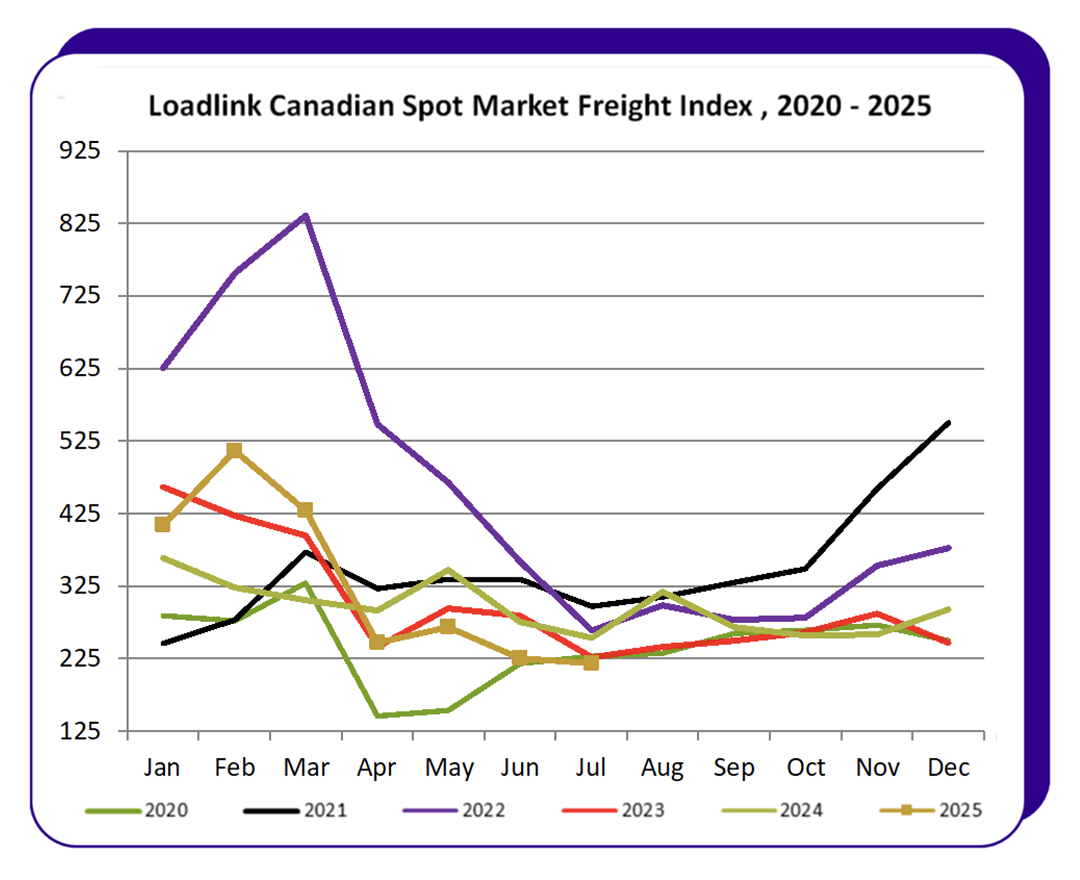
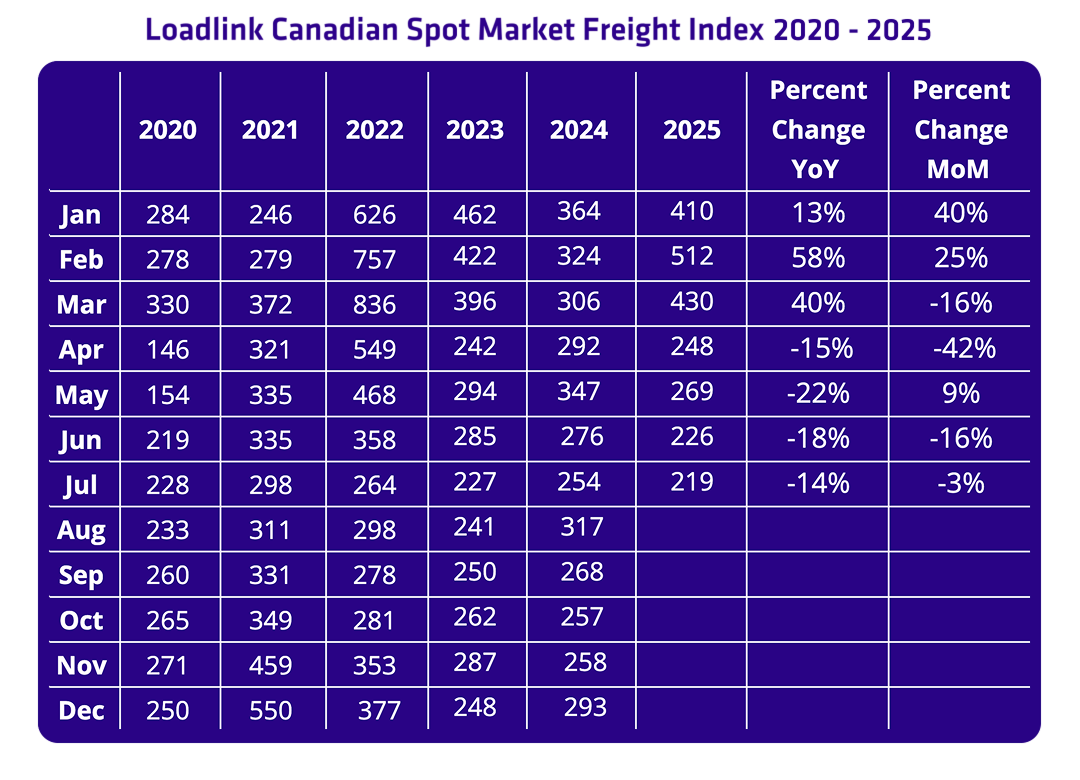
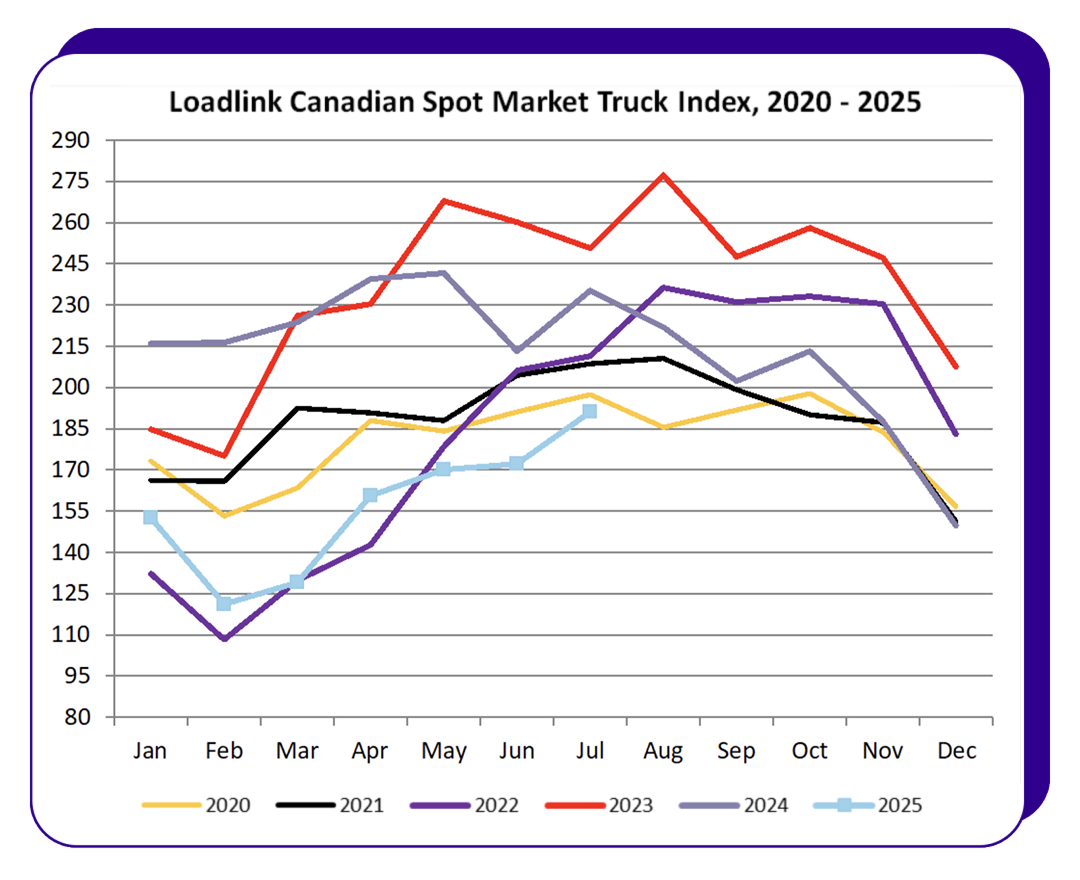
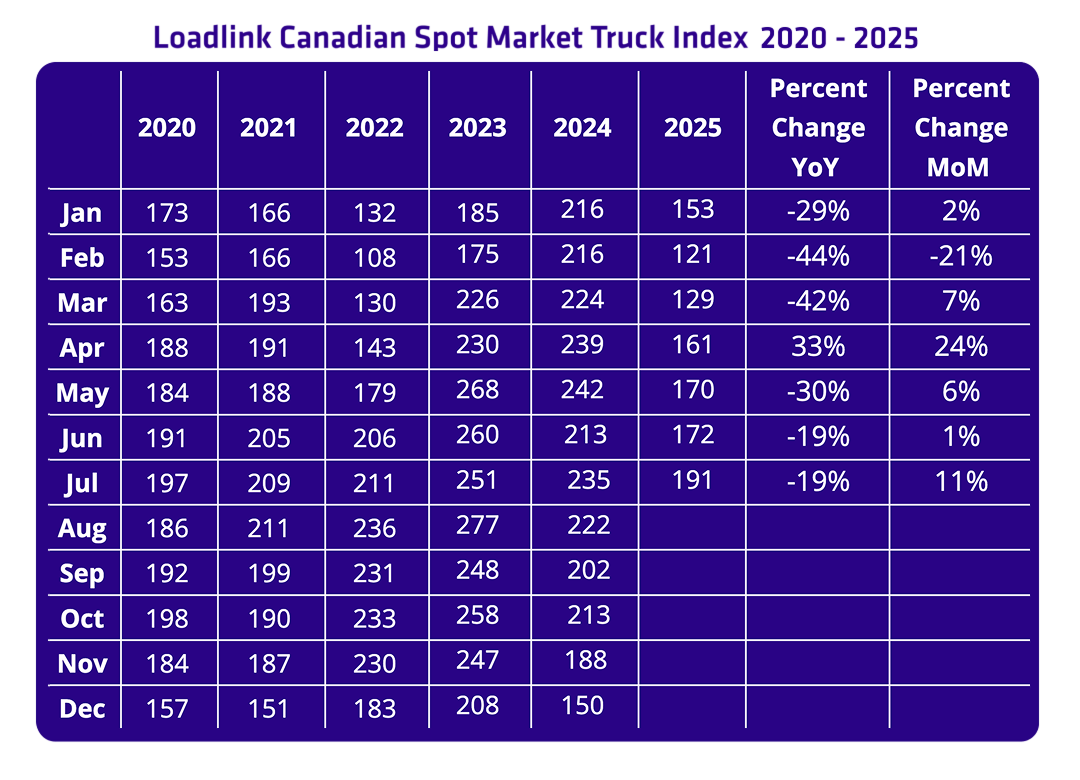




About Loadlink Technologies
Loadlink Technologies is Canada’s leading freight matching platform. By connecting brokers and carriers, Loadlink helps businesses move freight efficiently and cost-effectively. Through innovative solutions, Loadlink supports the logistics sector by simplifying workflows and enhancing the capacity for freight movement across North America through our software.
